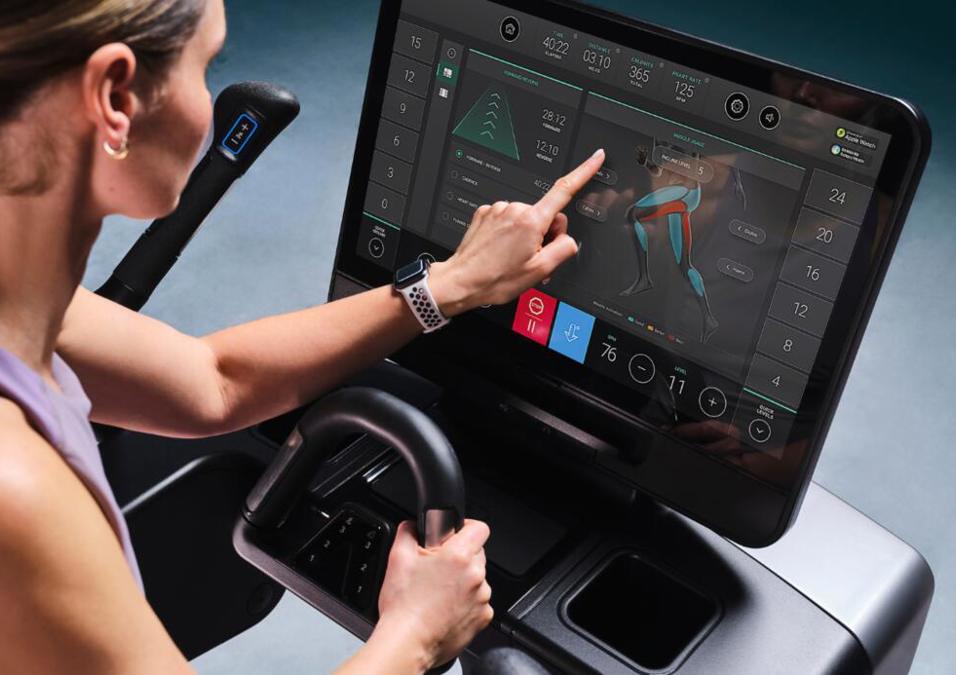Life Fitness: Rise of tech ecosystems

SIGN UP FOR YOUR FREE DAY PASS TODAY!
Technology ecosystems have seen substantial advancements, particularly in the health and fitness sector, over the past two decades.
Their roots can be traced to the early 1900s when Alexander Graham Bell, known for inventing the telephone and fax machine, developed a rudimentary digital ecosystem.
Today's ecosystems operate on a similar fundamental principle by connecting devices and people to provide real-time information access.
The Early Influence of Tech Ecosystems
"Ecosystems didn't become significant for me until the early 2010s, when the Internet of Things (IoT) began to flourish due to enhanced internet connectivity and cloud computing capabilities," says Anthony Radek, Senior Director of Connected Fitness at Life Fitness.
"It was during this period that we started offering genuinely connected products, and platforms like Fitbit, Garmin, and Apple began to introduce connected fitness devices that synced with mobile apps, enabling users to track activities, set goals, and monitor progress over time.
This connectivity also allowed operators to gain deeper insights into members' routines and advancements."
These ecosystems continued to expand, with equipment becoming increasingly interconnected.
This evolution provided data insights that facilitated better communication with members and more efficient operations, while apps amplified connectivity.
The Future of Ecosystem Evolution
Looking ahead, as with nearly every industry, artificial intelligence (AI) will play a crucial role.
"AI is still in its infancy within our sector, but it has the potential to significantly enhance data collection and analysis speed and precision," Radek points out.
"This will enable exercisers to enjoy a more personalized and performance-driven workout experience through predictive behavior analytics that can tailor workout plans, or by offering immediate feedback and coaching during workouts to optimize form and intensity."
There's no doubt, he adds, that advancements in software have had, and will continue to have, a profound impact on our industry.
These improvements range from increasing engagement through personalized and interactive fitness experiences to providing insightful data that aids in making informed decisions about equipment placement, maintenance, and marketing strategies.
Such advancements have improved user experiences, optimized operations, and pushed the industry toward a more personalized and data-driven approach.
Pioneering the Ecosystem
While Radek marks the 2010s as pivotal for tech ecosystems, Life Fitness stands among the industry's first developers.
In the early 2000s, they introduced a software feature called “Virtual Coach,” allowing exercisers to save workouts via USB and monitor results on their laptops.
Although it seems basic now, Virtual Coach was an initial step toward tracking fitness activity and gaining insights on performance and progression.
"Life Fitness has been at the forefront of connected fitness long before IoT and the web," he states. "In the early 90s, Life Fitness partnered with Nintendo to create the LifeCycle Exertainment Bike—a stationary bike for playing video games.
A few years later, Life Fitness developed its computerized workout system, Life Center, with IBM. Every innovation at Life Fitness heavily focuses on exerciser and customer research to ensure the delivery of motivating and progressive fitness experiences."
In 2012, Life Fitness introduced its first connected cardio platform, Discover, alongside LFConnect, the premier fitness app connecting to cardio equipment.
Discover paired with software allowed facility managers to customize equipment and remotely collect equipment use and performance data, enhancing training and business capacities.
Supported by the industry's first open APIs, Life Fitness linked its product solutions with other third-party systems most requested by customers and exercisers.
"Since then," Radek continues, "a significant evolution has been the launch of Life Fitness On Demand+, offering over 500 motivational fitness experiences from instructor-led videos to interactive terrains.
Furthermore, the platform allows commercial customers to upload and stream their own video content on our cardio products, powered by a custom-developed content management system on our platform, Facility Connect."
The latest milestone in Life Fitness' offerings is the Connect System, which integrates Life Fitness strength equipment with its customer's digital suite, providing comprehensive tracking and coaching across all areas of a fitness facility, including cardio, strength, and functional zones.
A New Level Platform
“Digital Solutions represents the evolution of our ecosystem,” he says. “At its core, the platform provides tools that maximize profitability and deliver more personalized workout experiences for trainers and exercisers.
It includes the new Connect System, which comprises our Life Fitness Connect App, Trainer Connect, and Connect Kits.
Facility Connect, our complementary web application, extends equipment lifespan, personalizes the experience, and enables data-driven decisions to fully capitalize on your investment.
Integrated with compelling Life Fitness On Demand+ content and various partner integrations, Life Fitness Digital Solutions is designed to offer digital tools that enhance the member experience and empower your business."
Though Digital Solutions is a comprehensive platform, how does it affect Life Fitness's core business, producing equipment?
"Consider our Symbio™ cardio line as an example," Radek explains.
"We believe it sets the standard for premium cardio equipment, being the most innovative and immersive fitness equipment available with purposeful design, personalized sensory experiences, and advanced next-gen biomechanics.
When connected to the Digital Solutions platform, Symbio becomes a powerful portal, linking users to an engaging and entertaining fitness journey.
With a high-definition console packed with options for personalization and advanced metrics and guidance, Symbio is redefining cardio workouts.
The Digital Solutions platform then amplifies the data collected from the Symbio equipment, rendering it valuable for both operators and members."
Source: healthandfitness
The opinions shared in the GymNation blog articles are solely those of the respective authors and may not represent the perspectives of GymNation or any member of the GymNation team.































































